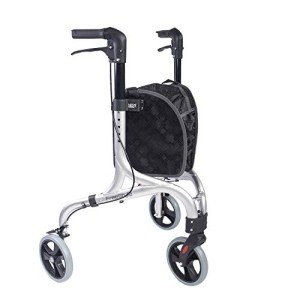The 10 Most Scariest Things About Medical Walker
페이지 정보
작성자 Nicki 댓글 0건 조회 299회 작성일 25-06-16 04:01본문
Understanding Medical Walkers: A Comprehensive Guide
Medical walkers serve as vital mobility aids for people recuperating from surgery, handling persistent illnesses, or handling age-related mobility problems. These devices not just improve physical self-reliance but likewise enhance safety, enabling users to browse their environments with higher ease. This article checks out the types, benefits, functions, and considerations related to medical walkers, in addition to some often asked questions.
Table of Contents
- Kinds Of Medical Walkers
- Benefits of Using a Medical Walker
- Secret Features to Consider
- Frequently Asked Questions
- Conclusion
1. Types of Medical Walkers
Medical walkers are offered in numerous styles, accommodating various needs and preferences. The primary types include:
| Type of Walker | Description |
|---|---|
| Standard Walker | A rectangular frame with four legs, providing stability and support. |
| Two-Wheeled Walker | Similar to a standard walker however equipped with wheels at the front for much easier motion. |
| Three-Wheeled Walker | A lightweight walker with three wheels, enabling for more maneuverability, suitable for indoor use. |
| Rollator Walker | A walker with 4 wheels, hand brakes, and a seat, appropriate for longer distances and resting requirements. |
| Hemi Walker | Designed for people who can use just one hand, including a tripod-like design. |
2. Benefits of Using a Medical Walker
Utilizing a medical walker presents a number of benefits that contribute to the user's overall wellness, including:
- Increased Stability: Walkers provide a stable base of support, minimizing the risk of falls.
- Improved Mobility: They enable users to walk around more quickly, promoting independence.
- Discomfort Relief: By redistributing weight, walkers can alleviate pain in the joints, particularly in the hips and knees.
- Posture Support: These devices motivate proper posture, decreasing stress on the back.
- Improved Confidence: Users typically feel more safe and secure using walkers, leading to much better self-confidence and increased activity levels.
3. Secret Features to Consider
When selecting a medical walker, it's crucial to evaluate different features to discover the best fit. Here are some vital elements to think about:
- Weight Capacity: Ensure the walker can support the user's weight while maintaining stability.
- Height Adjustment: Look for a walker with adjustable height settings to accommodate the user's height and offer comfy grip.
- Product: Lightweight aluminum walkers are simpler to maneuver, while steel walkers provide stronger assistance but may be heavier.
- Wheel Quality: If choosing a wheeled walker, consider the wheel size and tread. Bigger wheels navigate unequal surfaces more quickly.
- Seat Availability: If users will be walking for longer periods, a walker with an integrated seat can offer rest breaks when required.
- Brakes: Hand brakes are particularly crucial for safety in rollator walkers to manage speed and stop when needed.
Types of Walkers with Features Comparison Table
| Walker Type | Weight Capacity | Height Adjustment | Wheels | Seat Available | Brakes |
|---|---|---|---|---|---|
| Requirement Walker | As much as 300 pounds | Yes | No | No | No |
| Two-Wheeled Walker | Approximately 300 lbs | Yes | Yes | No | No |
| Three-Wheeled Walker | Up to 250 pounds | Yes | Yes | No | No |
| Rollator Walker | Up to 400 lbs | Yes | Yes | Yes | Yes |
| Hemi Walker | Up to 250 pounds | Yes | No | No | No |
4. Frequently Asked Questions
Q1: Who must use a medical walker?A: Medical walkers are useful for individuals recovering from surgery, experiencing balance concerns, or needing support due to age-related mobility challenges. Q2: Can a medical walker be adjusted?A: Yes, many
medical walkers are height-adjustable to accommodate various user heights, permitting a more comfy grip. Q3: How do I pick the best walker for my needs?A: Consider elements such as the
user's weight, height, kind of mobility problems, and whether they require a seat or brakes. Evaluating the walker for comfort and stability before purchase is likewise advisable. Q4: Are there any safety suggestions associated with using a medical walker?A: Yes, users must ensure they don't lean too
greatly on the walker, use it on steady and level surfaces, and always make sure
the brakes are engaged when seated or fixed. Q5: Can walking with a Medical Walker (click through the up coming page) help with rehabilitation?A: Absolutely. Medical walkers are frequently suggested as part of rehabilitation programs as they motivate
physical activity, which aids in healing and mobility enhancement. 5.
Conclusion Medical walkers play a vital function in enhancing the quality of life for people dealing with mobility challenges. With numerous types and features offered, picking the ideal walker involves considering the user's specific requirements and circumstances. By comprehending their benefits and appropriate use, individuals can regain independence, improve their mobility, and browse their surroundings safely. Whether for short-term recovery or long-lasting support, the right medical walker can considerably improve a user's general well-being. Including a medical walker into one's daily routine can be a transformative decision, making it much easier to take part in life's everyday activities while making sure safety and confidence.
댓글목록
등록된 댓글이 없습니다.


